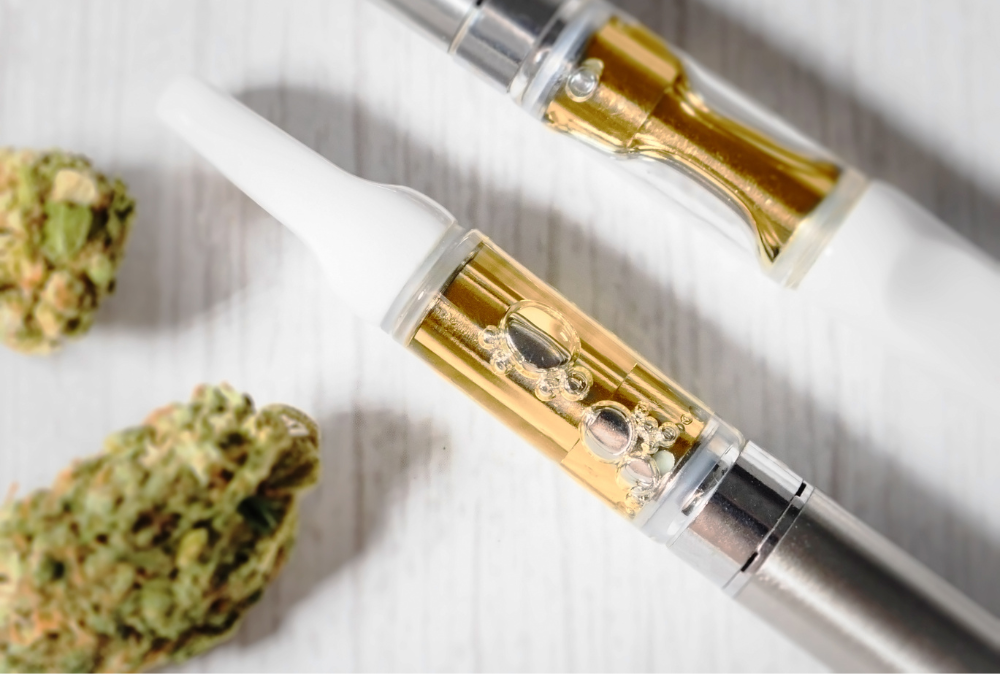
If there’s one thing shaking up the cannabis world, it’s the rise of weed pens. You may know them as vape cartridges, carts, pens, vapes, or our personal favorite moniker, the Penjamin. These sleek, portable devices have quickly become a favorite among cannabis enthusiasts, and it’s easy to see why. Whether you’re new to cannabis or a seasoned pro, the weed pen has something for everyone.
The popularity of the weed pen isn’t just a fluke — it’s a mix of convenience, innovation, and changing preferences. Here’s why everyone’s buzzing about them:
The rise of the weed pen is more than just a trend — it’s a reflection of how cannabis culture is evolving. People are moving away from traditional methods and looking for options that fit their lifestyles. Over the past few years, sales have surged, with some reports showing double-digit growth year after year. In 2021, vapor pen sales increased by over 28%, and the trend shows no signs of slowing down. As cannabis legalization spreads, the demand for weed pens is only expected to grow.
The weed pen has cemented itself as a staple in both the medical and recreational cannabis space. Its popularity is driven by its ability to adapt to modern lifestyles, offering a perfect mix of convenience, discretion, and innovation. As technology continues to improve, we can only expect weed pens to get even better — and even more popular.
If you haven’t tried a weed pen yet, now’s the perfect time to see what all the hype is about. Whether you’re looking for a discreet way to enjoy cannabis or just want to try something new, the weed pen is ready to deliver. If you’re in Utah with a qualifying medical condition and interested in seeing about vape pens for yourself, we’ve got you. Schedule today with one of our QMPs to see if a Utah Medical Marijuana Card is for you.
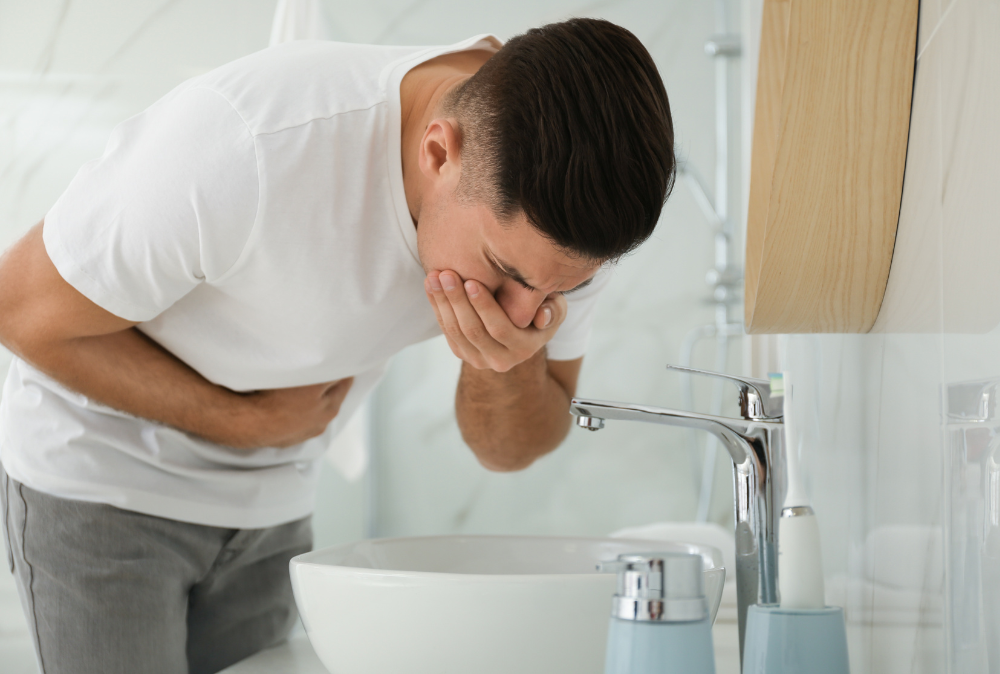
Cannabis hyperemesis syndrome (CHS) is a relatively new condition that has emerged as cannabis use has become more widespread. While cannabis is often touted for its therapeutic benefits, particularly in managing chronic pain, anxiety, and nausea, it can also lead to a paradoxical effect in some users — cannabis hyperemesis syndrome. In this article, we dive deep into cannabis hyperemesis syndrome, symptoms, causes, and potential treatments, to help you understand this rare but serious condition.
Cannabis hyperemesis syndrome (CHS) is a condition characterized by severe, persistent nausea and vomiting in people who regularly use cannabis. The symptoms typically develop in individuals who have been using cannabis for a long period, and who consume high doses of THC, the psychoactive compound in marijuana. It’s not clear why some suffer from CHS while others don’t.
While cannabis is commonly used to alleviate nausea, CHS is a contradictory condition where the opposite effect occurs. People with CHS experience cycles of intense vomiting that can last for hours or even days. Interestingly, hot water (baths or showers) often temporarily alleviates symptoms, though the underlying cause remains unclear.
The hallmark symptoms of cannabis hyperemesis syndrome include:
The exact cause of cannabis hyperemesis syndrome is not fully understood, but it is believed to be related to the way cannabis interacts with the body’s endocannabinoid system, which regulates a range of physiological processes, including mood, appetite, and nausea.
Some key factors that may contribute to the development of CHS include:
Diagnosing CHS can be challenging. Its symptoms can mimic those of other gastrointestinal disorders like gastroenteritis, pancreatitis, or cyclic vomiting syndrome. A healthcare provider typically diagnoses CHS based on a combination of factors:
The primary and most effective treatment for cannabis hyperemesis syndrome is to discontinue cannabis use. After cannabis cessation, vomiting and nausea often subside, leading to recovery in a matter of days.
However, there are several steps that one may take to manage symptoms during a CHS episode:
The best way to prevent cannabis hyperemesis syndrome is to limit cannabis use. Many of us do not need large amounts of THC to feel relief from Medical Cannabis. For individuals who use cannabis medicinally, it is important to monitor consumption closely and to discuss any potential side effects with a healthcare provider. For recreational users, moderation is key — especially if they have a history of gastrointestinal issues or have been using cannabis for years. Finding your “just right” dose or lowering your tolerance to THC may help prevent CHS.
Cannabis hyperemesis syndrome is a rare but serious condition that affects long-term, heavy cannabis users, causing episodes of severe nausea, vomiting, and abdominal discomfort. If you or someone you know is experiencing these symptoms, it is important to seek medical advice and stop using cannabis to prevent further complications. With proper treatment and a commitment to discontinuing cannabis use, most individuals with CHS can recover fully. For helpful Medical Cannabis tips and tricks for use, check out our educational guides or schedule an appointment at any of our clinics to chat with a Qualified Medical Provider.
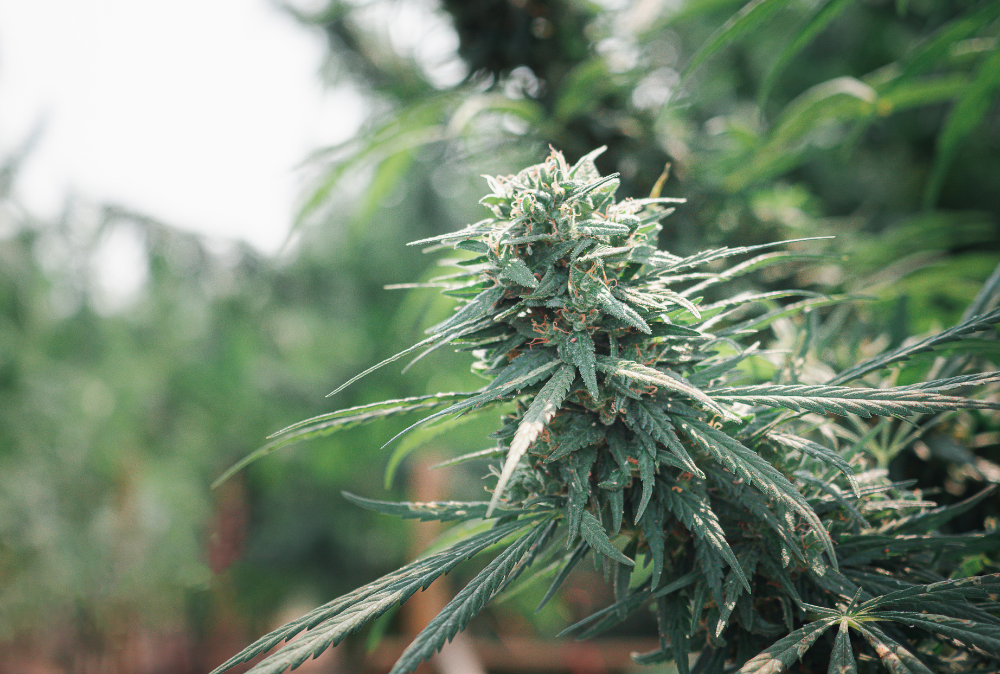
Cannabis use has become increasingly common, with many people using marijuana for recreational and medicinal purposes. However, if you’ve decided to quit or reduce your cannabis consumption in the new year, it’s important to understand the process involved. Quitting cannabis isn’t always as simple as just stopping use — there can be physical and psychological challenges that make you quite uncomfortable. In this article, we’ll explore what you need to know about marijuana withdrawal and how long cannabis stays in your system.
When you use cannabis regularly, your body becomes accustomed to the active compounds in marijuana, especially tetrahydrocannabinol (THC). THC is the psychoactive ingredient in marijuana that produces a “high” feeling. When you suddenly stop using cannabis, your body may struggle to readjust, leading to what is known as marijuana withdrawal.
Marijuana withdrawal occurs when the body reacts to the absence of THC. Unlike withdrawal from substances like alcohol or opioids, cannabis withdrawal symptoms are generally less severe (and not fatal!) but can still be uncomfortable and challenging to manage. Withdrawal can happen after even moderate use of cannabis, especially if you’ve been using it frequently over an extended period.
If you’ve been using marijuana regularly and decide to quit, you may experience a range of weed withdrawal symptoms. These symptoms vary depending on the individual and the extent of their cannabis use. However, there are a few common withdrawal symptoms that many people report:
One of the most important factors to consider when quitting cannabis is how long marijuana stays in your system. The answer depends on several factors, including how often you use cannabis, the amount you consume, your metabolism, and the method of use.
The reason THC stays in the body for a long time is that it is fat-soluble, meaning it binds to fat cells and can be stored in the body. This is why people who use cannabis frequently or in large amounts may experience a longer duration of withdrawal symptoms compared to occasional users.
Got a drug test coming up? Here are a few tips to potentially rid your system of THC quickly.
Weed withdrawal symptoms can vary in intensity and duration depending on the individual and their level of cannabis use. On average, most people experience symptoms for about 1 to 2 weeks after quitting. However, some symptoms, like irritability and cravings, can last longer.
Quitting cannabis can be challenging, but there are several ways to manage weed withdrawal symptoms and make the process easier:
Whether you’re quitting permanently or simply taking a tolerance break to reset your tolerance, quitting cannabis is a personal journey that can come with its own set of challenges. While marijuana withdrawal and weed withdrawal symptoms can be uncomfortable, they are temporary, not fatal, can be successfully managed with the right strategy. Understanding how long marijuana stays in your system and what to expect during the withdrawal process can help prepare you for a smoother transition.
If you’re considering quitting or have already stopped using cannabis and are struggling with withdrawal, it’s always a good idea to talk to a healthcare professional for guidance. The folks here at UtahMarijuana.org and our affiliated clinic, KindlyMD, are here to help. Schedule with one of our Medical Cannabis providers today. With the right tools and mindset, you can navigate the withdrawal process and move toward a cannabis-free lifestyle.

The Utahmarijuana.org website is part of a larger organization of professionals and support staff who believe wholeheartedly in the benefits of promoting Medical Cannabis use among patients whose conditions or symptoms can be improved by it. Education is a big part of what we do. Along with our clinics, operating under the KindlyMD brand, we seek to provide as much information as possible.
To us, patient education isn’t just another marketing avenue. Rather, it is critical to our mission. We want to help patients make the best decisions for them. And in order for them to participate intelligently in the decision-making process, they need to be informed.
We focus a lot of our educational efforts on efficacy. Simply put, we want patients to understand what Medical Cannabis can and cannot do. We want them to understand that it is not a miracle drug capable of curing everything under the sun. Yet at the same time, we also want them to know that Medical Cannabis is particularly good at alleviating the symptoms of more than a dozen conditions.
We believe it is important that patients understand the difference between symptom management and cure. Why? Because Medical Cannabis doesn’t cure anything – at least as far as we know. When a doctor, physician assistant, or nurse practitioner recommends it, cannabis is intended to help alleviate symptoms. That is not a bad thing, by the way. Prescription pain medications do the exact same thing; they relieve the symptoms of pain without actually curing the underlying illness. And when a cure is not an option, our patient’s quality of life takes center stage.
Medical Cannabis education does not end with efficacy. There’s so much more patients need to learn. Take dosage and delivery method. Dosage equates to the total amount of medicine delivered into the body when a person uses Medical Cannabis. We believe it is best that patients take the smallest dose possible, especially to start. We always recommend starting slowly, gradually increasing dose until the patient finds that sweet spot of relief.
As for delivery methods, they can have a significant impact on how a patient feels. Vaping and dry heating deliver maximum dosage very quickly. THC gets into the bloodstream almost instantly, then goes to work to provide relief. However, the medication’s effects tend to wear off more quickly.
An edible product, like a tablet or gummy, takes longer to start working because the active ingredients need to make their way through the digestive tract. That means edibles do not work as quickly as vapes and dry heating. On the other hand, symptom relief tends to be more consistent and long lasting once the medications do kick in.
These are all things patients need to know. Without such knowledge, how can they truly understand the best way to use Medical Cannabis effectively?
Although we do not provide legal advice, compliance remains a valuable component of our educational efforts. Utah’s Medical Cannabis law is both clear and strict. Things need to be done by the book if one hopes to continue using THC medications legally.
Our clinics need to comply in order to keep their licenses. Each of our Qualified Medical Providers (QMPs) must abide by the rules pertaining to their licenses. When everybody follows the law, better decisions are made.
The truth of the matter is that Medical Cannabis is not a simple topic. There is a lot to know about it. That being the case, we believe education is critical to helping patients get the most from their medicines. It’s always a good idea to consult our Medical Cannabis guides or your provider with further questions.

Did you know that there are now more than 83,000 Medical Cannabis Card holders in Utah? Thousands of people are joining the program every quarter. That tells us some important things, including the fact that there may be people reading this post who have not yet gotten their cards despite wanting to do so. If you are one of them, what do you know about the state’s electronic verification system (EVS)?
We ask the question for a very important reason: getting a Medical Cannabis Card requires interacting with the EVS. The EVS is the heart and soul of Medical Cannabis administration in Utah. But no worries, it is nothing to be afraid of.
You can use a smartphone, right? You know how to browse websites and sign up for accounts as well. With just basic computer and phone skills, you can do what’s necessary in the EVS to get and renew your Medical Cannabis Card.
The simplest way to explain the EVS is to call it an online portal. It is a portal used by patients, medical providers, and government employees to manage the state’s Medical Cannabis program. As a patient, your use of the EVS is strictly for managing your card.
To get an initial Medical Cannabis Card, you first need to establish an EVS account. You do that by going to the EVS website and signing up – just as you would with any other type of account. The only caveat is that you have a UtahID already in place. More on that in a minute.
With an EVS account established, the process for getting your card is pretty straightforward:
That’s it. Completed applications are reviewed within a few days. Normally, review and approval occur much faster. If approved, you receive your Medical Cannabis Card electronically. You can carry it on your phone or print a paper copy. It is your choice.
Medical Cannabis patients need a UtahID account in order to establish an EVS account. The UtahID system was put in place to make it easier to connect state residents with digital services. The system is essentially the hub of all online activities available to residents.
If you have done things like renew your car registration online, you likely already have a UtahID account. You would use the same username and password to establish your EVS account. If you don’t have a UtahID username and password, you do not have an account. You will need to sign up for one before you can use the EVS.
One final word before closing up here: don’t confuse the EVS with the state’s Electronic Visit Verification (EVV) system. The EVV system has nothing to do with Medical Cannabis Cards. It is a system designed to verify data related to home and community-based Medicaid services.
The thing about the EVV system is that you couldn’t sign up for it even if you tried. The system is for providers and vendors. Nonetheless, we would hate for you to be confused and think you cannot get a Medical Cannabis Card because the computer system will not let you in.
For Medical Cannabis Cards, you want the EVS. Just pop on over to the site and set up your own account. That’s the first step in getting a card in Utah.
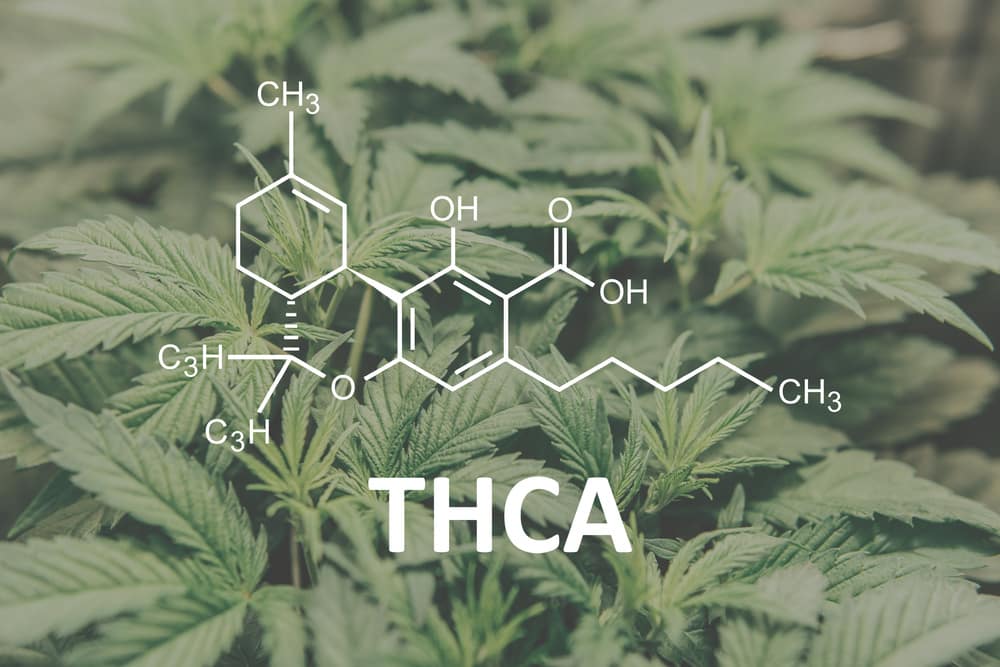
It is no stretch to say that Utah residents with Medical Cannabis Cards are familiar with THC. They at least know about it, even if they don’t possess advanced scientific knowledge. But what about THCA? The two substances are similar in the sense that they are both related to the cannabis plant. But they are technically not the same thing.
Most of the time, it is no big deal when people speak of THC and THCA interchangeably. Yet it’s probably a good idea to understand what makes them different. The best way to introduce their differences is to explain that THCA is the precursor to THC.
Here at Utah Marijuana, we like to describe cannabis as offering a cornucopia of compounds. Cannabis naturally produces cannabinoids, terpenes, flavonoids, and other compounds we can harvest for a variety of benefits. Two of those compounds are THC and THCA.
THC and THCA are considered primary metabolites. Compounds like terpenes and flavonoids are known as secondary metabolites. If you’d like to know more, The Cannigma has an excellent explanation of all of this on their website. For our purposes, let us stick with THC and THCA.
In order to transform raw plant material into the products you buy at your local Medical Cannabis pharmacy, processors need to extract the desired compounds. But guess what? They don’t actually extract THC from plant material. They extract THCA.
‘THCA‘ is an acronym that stands for ‘tetrahydrocannabinolic acid’. It is more or less THC in an acid state. But in this state, it doesn’t help us. There are no known medical benefits to ingesting or otherwise using THCA. What we want in the Medical Cannabis community is THC. So how do we get it?
Transforming THCA into THC requires separating out the carbolic acid group. We want that group to be taken away. The easiest way to do it is to apply heat. If you use Medical Cannabis with a dry heat vaporizer, that’s exactly what you’re doing. You are applying just enough heat to release the THC – separate from its carbolic acid group – without actually burning the material.
Processors do not rely on huge dry heat vaporizers to produce THC. Instead, they apply one of several different processing methods to extract crude oil from plant material. Crude oil contains all those primary and secondary metabolites. Things get interesting after extraction.
The crude oil is subjected to high heat and pressure in a process similar to distillation. The different compounds in the crude oil evaporate at different temperatures. So through evaporation and condensation, the various compounds can be separated. But that’s not all.
The heat and pressure applied during processing also releases the carbolic acid group. In scientific terms, this is known as decarboxylation. THCA becomes THC, CBDA becomes CBD, and so on.
Our team here at Utah Marijuana gets the fact that these sorts of things do not interest everybody. But to us, it is fascinating stuff. We thoroughly enjoy learning everything we can about Medical Cannabis, including how it’s processed and how it can help patients feel better. And speaking of feeling better, that is our main goal. We want you to feel as good as possible.
Just remember that THC and THCA are distinctly different despite sharing some similarities. They both come from cannabis plants. It is just that one is a direct metabolite while the other is derived from it. If you can remember that THCA is the precursor to THC, you are all set. That’s the most important thing.
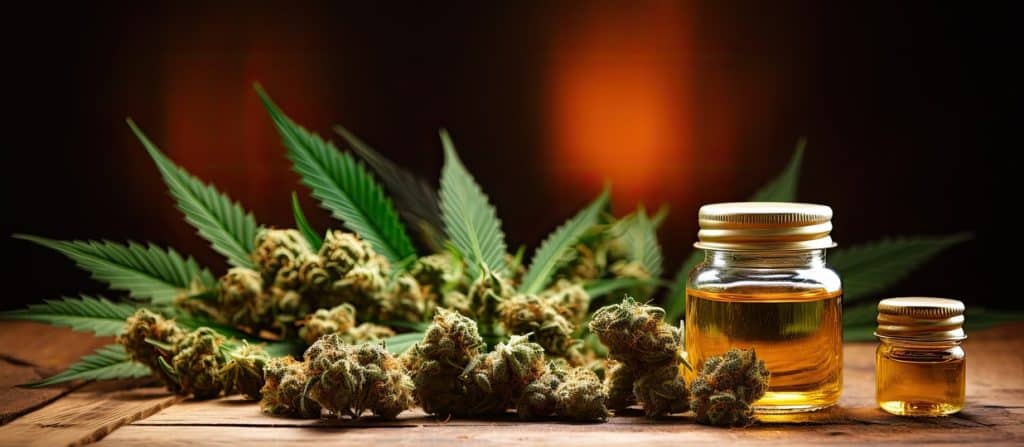
One of our goals here at Utahmarijuana.org is education. We want Utah’s Medical Cannabis patients to know as much as possible about cannabis and medications derived from it. With that in mind, we want to offer this brief reminder about THC, THCA, and the difference between the two compounds. We briefly touched on this topic in a blog post published a few years ago.
As you might already know, THC is the active ingredient in the vast majority of cannabis medicines. It is possible to purchase THC-free products based in state and federally legal CBD. But the products for which a Medical Cannabis card is required in Utah contain THC or, more specifically, delta-9 THC. This differentiation will be important in just a minute.
Different varieties of cannabis plants contain a wide range of cannabinoids and terpenes. At last count, there were more than a hundred such compounds found organically in cannabis plant material. THCA is just one of them; CBDA is another.
THCA is known scientifically as tetrahydrocannabinolic acid. In its natural state, it doesn’t have a lot to offer in terms of medical benefits – at least based on what we know right now. In order to derive any such benefit from it, THCA needs to be converted to THC. And what is the best way to do that? By applying heat.
Heat causes THCA to give up its carboxyl group (the acid). Here in Utah, Medical Cannabis processors extract all the cannabinoids and terpenes they can from plant material. They apply heat and distillation to separate the compounds. A byproduct is decarboxylation, the process of transforming THCA into THC through the application of heat.
In its natural form, THCA will not get you high. It does not have any psychoactive effects. Unfortunately, THCA doesn’t appear to help much with the chronic conditions most often associated with Medical Cannabis. On the other hand, THC does help.
THC begins its life as THCA. But following decarboxylation, it has the psychoactive and medicinal effects Medical Cannabis patients are after. THC can be combined with other cannabinoids and a selection of terpenes to offer defined medical benefits.
Incidentally, what applies to THC and THCA also applies to CBD and CBDA. The latter occurs naturally in cannabis plants. To get from CBDA to CBD, decarboxylation is necessary. Heat and distillation are once again the primary processes by which this happens.
The professionals that run our clinics are frequently asked about THCA’s legal status. The answer to that question depends on who you ask. On one side of the coin is those who hold strictly to the language of the 2018 Farm Bill in insisting that THCA is legal.
According to their reasoning, the only cannabis-related substance banned by the Controlled Substances Act (CSA) is delta-9 THC. Because THCA has not yet been decarboxylated, it does not qualify as delta-9.
On the other hand, the Drug Enforcement Agency (DEA) insists that it retains control over any and all compounds derived from cannabis. In their estimation, THCA is included on Schedule I of the CSA. Therefore, they still consider it illegal. We like The Cannigma’s take on the matter: THCA occupies a gray area of the law. It is best to approach it with caution.
Here in Utah, THCA is not something we talk a lot about in the Medical Cannabis realm. We may have to start talking about it at some point in the future. It is out there, and it may have some medical benefits attached to it.
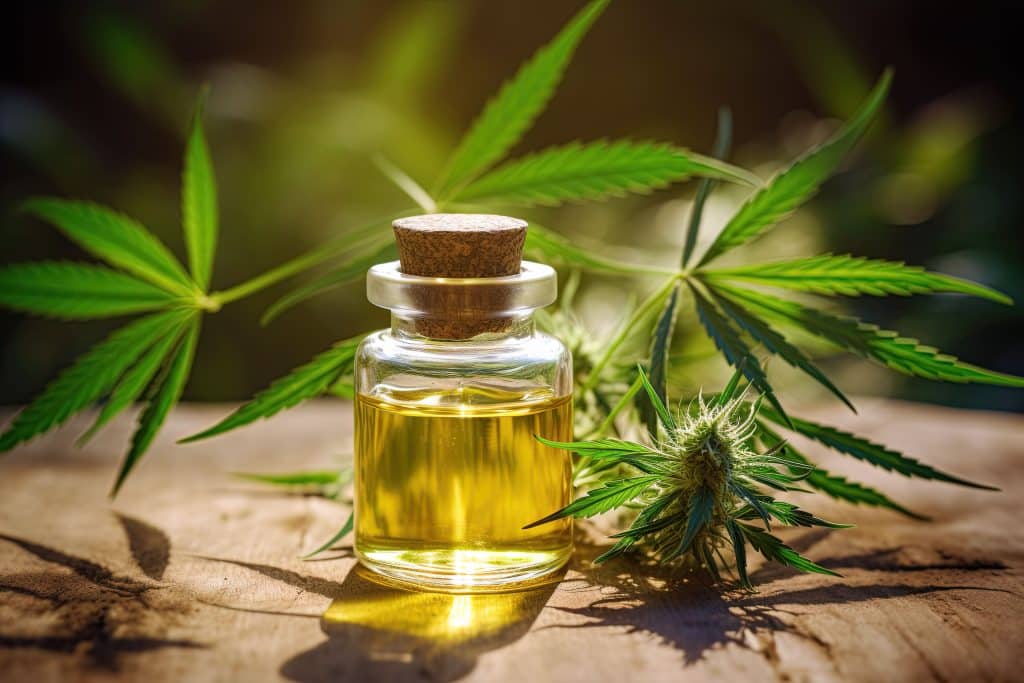
The mechanisms behind Medical Cannabis efficacy have long been a fascination among many of us here at UtahMarijuana.org. Those of us in the industry have our hunches, but many of the mechanisms are still unknown. For example, is feeling high one of the mechanisms? And if so, does that make it a benefit derived from using Medical Cannabis?
Though all of this might sound pretty self-evident to our readers, the questions posed here are directly related to a 2023 study out of the University of New Mexico. That study showed a fascinating correlation between feeling high and Medical Cannabis’ perceived benefits. However, researchers also discovered a correlation between Medical Cannabis consumption and increased negative side effects.
Researchers enrolled nearly 2,000 patients and asked them to record their perceptions of a combined 16,000 Medical Cannabis experiences. Among other things, they were interested in whether feeling high made any difference in medication effectiveness. The researchers acknowledged an inherent challenge to their study: variations in the way feeling high is defined. There is no scientific standard.
Despite this particular challenge, the research uncovered some noteworthy things:
It is worth noting that nearly every prescription medication has both positive and negative side effects. We all weigh those side effects when determining whether to take a drug. As long as the good outweighs the bad, we tend to consider a drug worthwhile.
What is curious in this case is that feeling high appears to lead to more bad side effects than good. That takes us right back to the question of whether feeling high is a benefit to Medical Cannabis patients.
It wouldn’t be right for us to judge Medical Cannabis based solely on positive and negative side effects. At the end of the day, symptom relief is what it is all about. If you were talking to a chronic pain patient, for example, an increase in negative side effects might be worth tolerating just to get some much-needed pain relief.
The conditions for which Medical Cannabis is recommended are mostly chronic conditions that can have debilitating impacts on a person’s life. We go back to chronic pain. Living with pain month after month, year after year takes its toll. We have known patients so desperate for relief that they are willing to tolerate just about any side effect Medical Cannabis might offer.
Even with that knowledge, we get the fact that feeling high is not always the goal. In fact, some Medical Cannabis patients avoid it altogether. They are more interested in how cannabinoids can help alleviate their symptoms than walking away feeling the euphoria that is so often attributed to cannabis consumption.
While the data from the 2023 study requires a lot more analysis, one thing we know for sure is that Medical Cannabis consumption is a very personal thing. How any one patient responds to therapeutic cannabis is not necessarily indicative of how other patients will respond.
There are those patients who believe feeling high is a major benefit derived from Medical Cannabis. There are others who would say just the opposite. What is important in all of this is whether therapeutic cannabis is working for a particular patient. Each patient has the freedom to decide if the benefits of Medical Cannabis make any negative side effects worth tolerating.
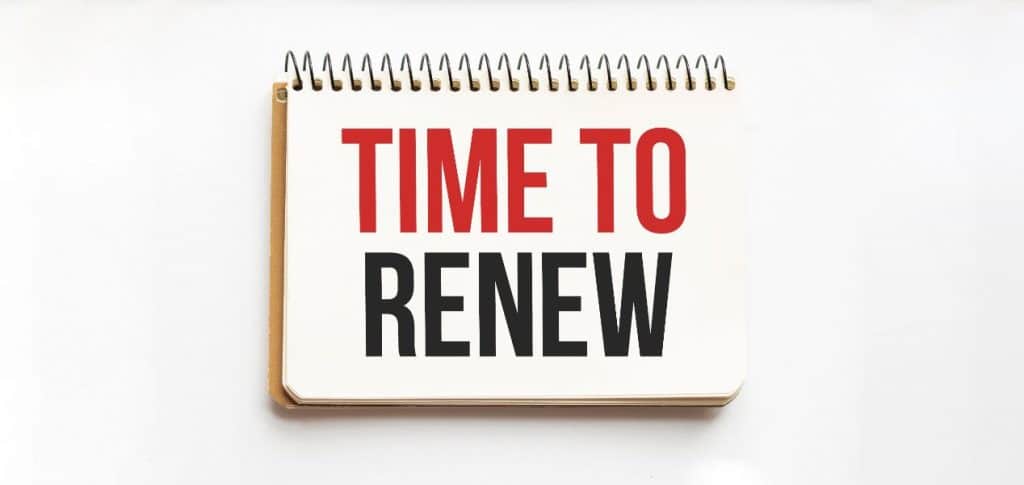
As you probably know by now, updates to Utah’s Medical Cannabis law implemented earlier this year increased the Medical Cannabis Card renewal period from six months to one year. One year is now the norm. However, it is not set in stone. Medical providers can recommend a 3- or 6-month renewal period if they deem it appropriate.
Our guess is that shorter renewal periods are not going to be an issue for most Medical Cannabis patients in the state. But obviously, that is a decision medical providers and their patients will have to work out together. This is the way it should be. Patients should ultimately be in control of their own healthcare. Ideally, they should collaborate with their medical providers to come up with the best and most effective strategies.
New patients are getting on board with Medical Cannabis all the time. That being the case, you might be reading this post without having any clue as to how Utah’s program works. It all starts with qualifying conditions.
In order to purchase Medical Cannabis at a state licensed pharmacy, you need to have a valid Medical Cannabis Card. To get that card, you need to have been diagnosed with one of the qualifying conditions on the state list. Some of the more common conditions seen in Utah include chronic pain, PTSD, cancer, and seizure disorders.
If you have a qualifying condition and your medical provider believes Medical Cannabis is an appropriate treatment, they can help you get your card. That is our mission here at UtahMarijuana.org. Our parent organization operates numerous clinics staffed by Qualified Medical Providers (QMPs).
Our QMPs work with two kinds of patients: patients looking to get that first Medical Cannabis Card and current patients that need a Cannabis Card renewal. We make the point as a reminder that permanent cards are not issued. As with any other prescription medication, Medical Cannabis should be used in accordance with the medical provider’s recommendations. To ensure that happens, the state requires annual renewals.
Again, one year is the norm. If you were to get your first card today, you would need to renew it before this same time next year. The only exception would be if your medical provider recommended a 3- or 6-month renewal period. If you have any questions about a shorter renewal period, do not be afraid to ask your medical provider about it. Utah’s Medical Cannabis program works best when patients and their medical providers have open, frank discussions.
What happens if you don’t renew your card prior to its expiration? It will no longer be valid once the expiration date is reached. In such a case, you would no longer be able to purchase Medical Cannabis products from a state-licensed pharmacy.
As far as we know, the state does not allow a grace period for renewal. So if you know that you’re going to want to keep your card active beyond your next expiration, don’t wait until a day or two before to set up an appointment with your medical provider. Give yourself plenty of time to get the renewal taken care of.
If you need assistance with either a new Medical Cannabis Card or a Cannabis Card renewal, feel free to contact us here at UtahMarijuana.org. We can help you connect with any one of our clinics so that you can set an appointment to meet with the QMP. We will do everything within our power to help you along your Medical Cannabis journey.